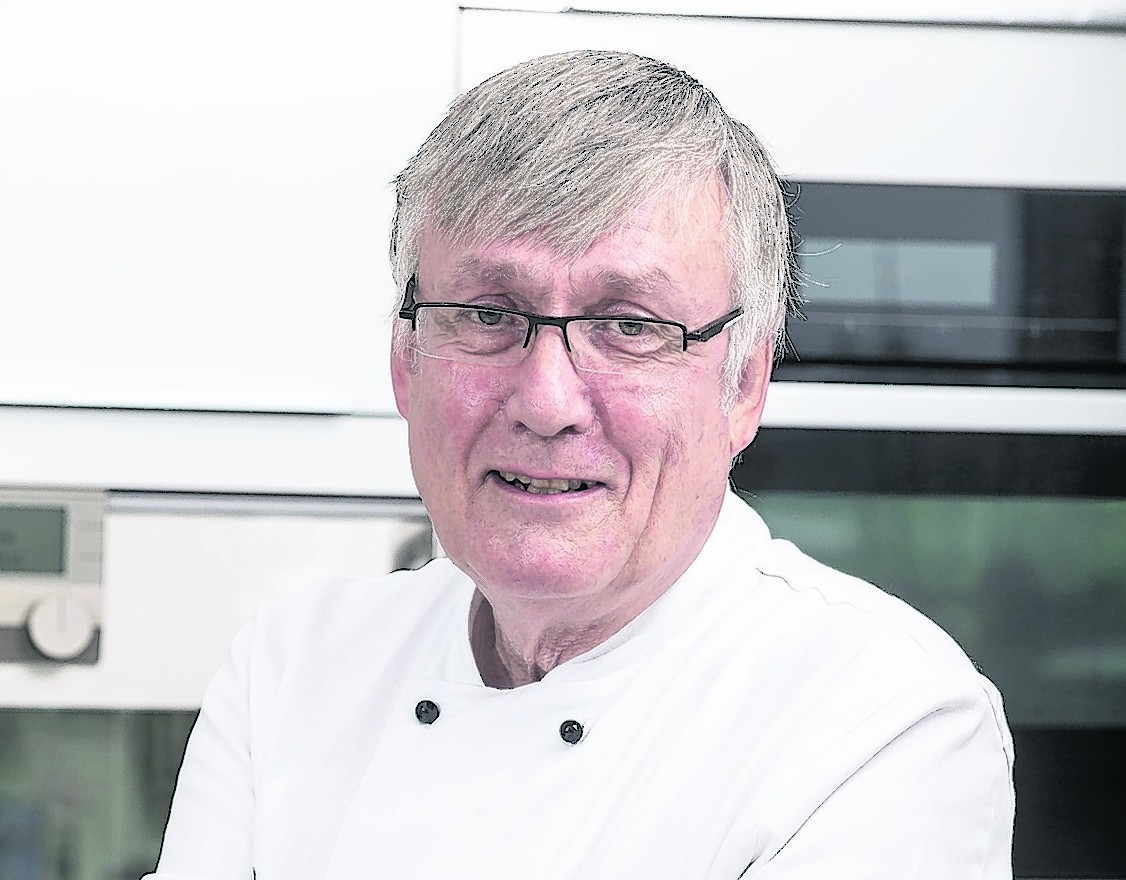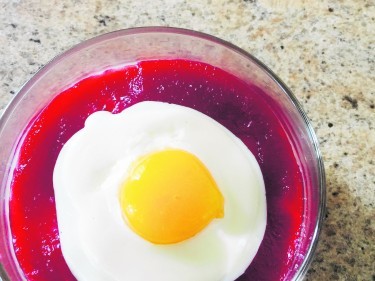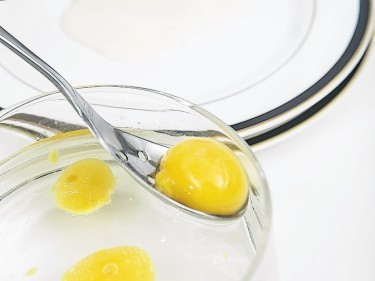Trinity International Services’ offshore operations manager Bob Dougall knows a thing or two about cooking. Having worked in the offshore industry for more than 25 years, Bob’s had the experience of feeding some of the harshest food critics – offshore workers.
This summer, Bob put some of his skills to the test in the field – literally – serving up a range of on-trend molecular gastronomy dishes to Trinity’s guests on the Highland Games circuit.
We’ve been in the kitchen with Bob this week, who’s given us a sneak peek at what he’s been creating, as well as providing us a recipe for a cheesecake with a difference.
Molecular gastronomy uses physics and chemistry to change the tastes and textures of food. This scientific approach can result in exciting and artistic dining experiences and can involve advanced cooking techniques including spherification (shaping a liquid into a sphere shape), gelification (sculpting flavours into tasty pearls, ravioli or spaghetti) and emulsification (creating colorful foams to intensify aromas).
STRAWBERRY CHEESECAKE WITH MOLECULAR FRIED EGG RECIPE
CHEESECAKE:
250g digestive biscuits
100g butter, melted
1 vanilla pod
600g soft cheese
100g icing sugar
284ml pot double cream
TOPPING:
400g punnet strawberries, halved
25g icing sugar
To make the base: Butter and line a 23cm loose-bottomed tin with greaseproof paper. Place the digestive biscuits in a plastic food bag and crush to crumbs using a rolling pin. Transfer the crumbs to a bowl and pour over 100g melted butter. Mix thoroughly until the crumbs are completely coated. Tip them into the tin and press firmly down to an even layer. Chill in the fridge for 1 hr to set. Alternatively layer the bottom of six Verrine glasses with the biscuit mix. No need to line the base with greaseproof paper as they can be served directly from the glasses.
Remove the vanilla seeds from one pod: Slice the vanilla pod in half lengthways and scrape out the seeds using the back of a kitchen knife.
Make the filling: Place 600g soft cheese, 100g icing sugar and the vanilla seeds in a bowl, then beat with an electric mixer until smooth. Pour in 284ml pot double cream and continue beating until the mixture is completely combined. Spoon the cream mixture onto the biscuit base. Smooth the top of the cheesecake down with a spatula. Leave to set in the fridge overnight.
Before serving let the cheesecake sit at room temperature for 15 minutes. To un-mould: place the base on top of a can; gently pull the sides of the tin down. Slip the cake onto a serving plate, removing the lining paper and base.
Purée half the 400g punnet strawberries in a blender or food processor with 25g icing sugar and 1 tsp water and pass through a fine sieve. Pile the remaining strawberries onto the cake, pour over purée.
Alternatively top the Verrine glasses with the strawberry mix and fresh strawberries or garnish to your own choice.
MOLECULAR FRIED EGG
Incorporating gelification and spherification
ADDITIVES
2g agar-agar
1 tsp calcium lactate
2g sodium alginate
INGREDIENTS
470ml water
120ml whole milk
100g vanilla yoghurt
1 ripe mango
2 tbsp caster sugar
Make an alginate bath: dissolve the sodium alginate in the water with a hand blender and refrigerate for 15 minutes. Wait for the bubbles to disappear.
In a pan, mix the milk and agar-agar. Bring to the boil.
Add milk and agar-agar to the yoghurt and stir well.
Pour the yoghurt over a plate twice successively to create the shape of a sunny-side-up egg white. Refrigerate for 15 minutes.
Puree the mango, sugar and calcium lactate in a blender.
Using an oval shaped measuring spoon (1 teaspoon size), deposit mango puree into the alginate bath. Leave for three minutes.
Remove the “egg yolks” with a perforated spoon and rinse in a bowl of cold water. Place the “yolks” on the “whites”.
Note: The longer you leave the “yolks” in the alginate bath the thicker the membrane will be. You should be able to pierce the “yolk” and the liquid centre runs out, just like a real fried egg.


